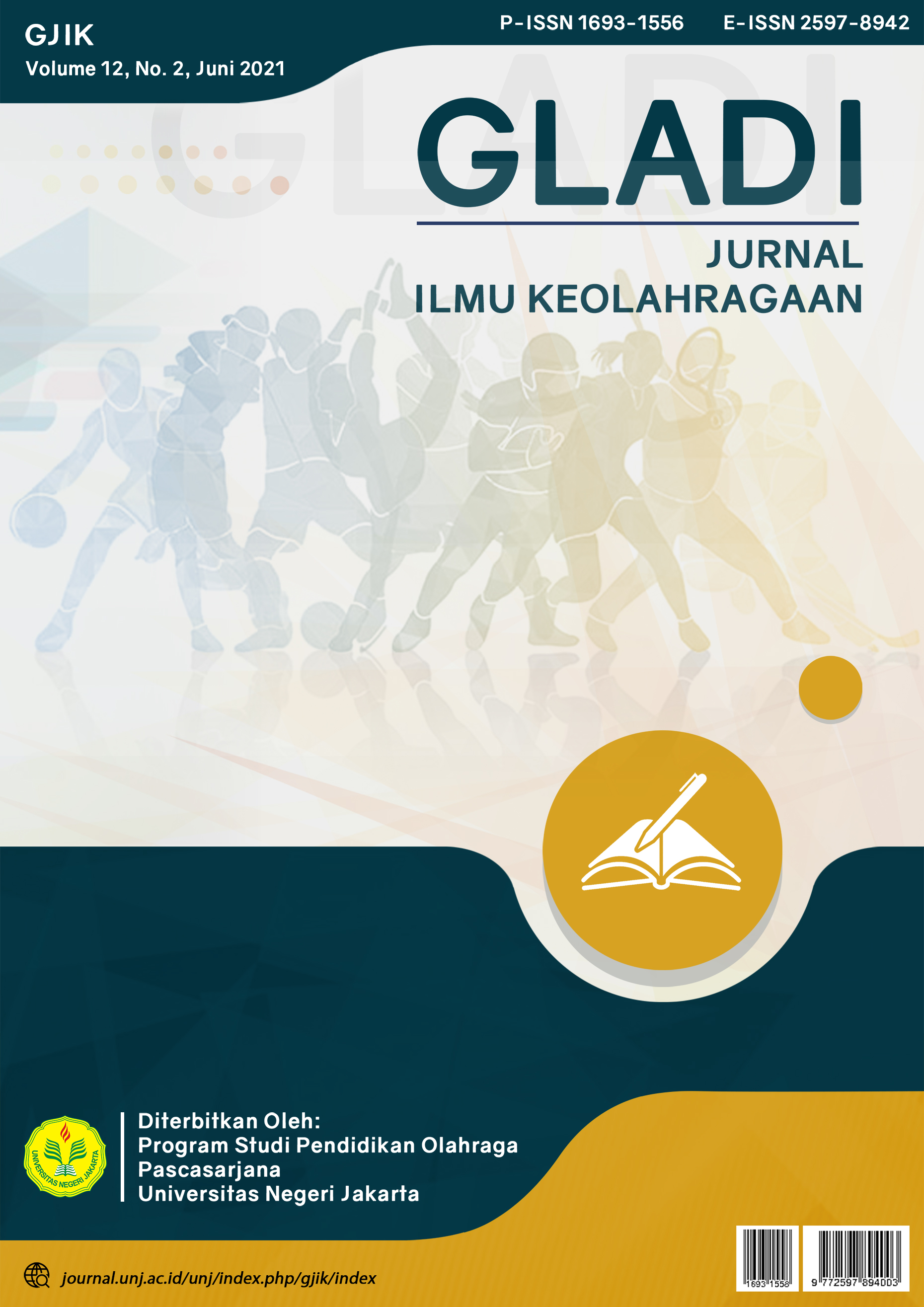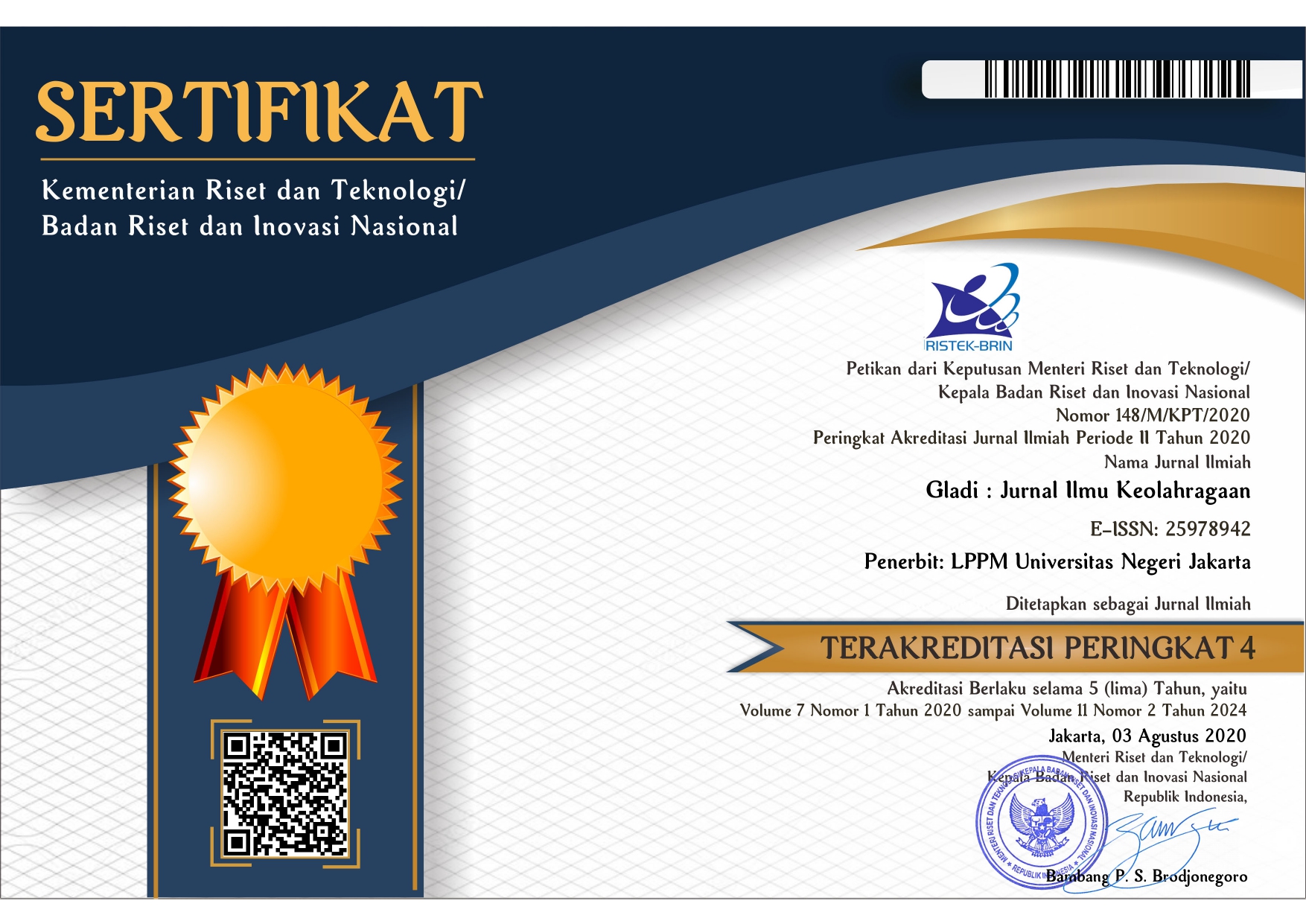BODY FAT AND VISCERAL FAT AMONG MARRIED MAN AND WOMAN IN RURAL SOCIETIES
DOI:
https://doi.org/10.21009/GJIK.122.01Keywords:
Body Fat; Visceral Fat, Bioelectric Impedance Analysis, Rural SocietiesAbstract
High levels of body fat and visceral fat are the causes of metabolic disorders which are influenced by several factors, including gender. Good social economic condition has brought many changes in the food choices and eating behaviors among married man and woman in rural societies. This shift around nutrition has given rise to Body Fat dan Visceral Fat level which is lead to degenerative illness. Considering this condition, the present study was planned to 1) determine the differences of Body Fat and Visceral fat among married Man and Woman and 2) Find the relationship between the Body Fat with Visceral Fat among Man and Woman. A total of 34 Karang Tengah Villagers 15 Men, 19 women, 18-30+ years from all over the village were voluntary joining the study. Verbal Inform concern was obtained, a self-administered questionnaire was given, and the Body composition were measured by bio-electric impedance analysis device. Data were analyzed using SPSS – 23. The results indicated that Body Fat average in Man were lower than Woman with 21,28% and 39,25%, respectively (p-value 0.000). But different result showed in Visceral Fat, Men were Higher than Women, 10,4 and 7,26, respectively (p-value 0.028). Significant positive correlations were found among Body Fat and Visceral Fat level in both Men (r 0,977, p-value 0,000) and Women (r 0,971, p-value 0,000). Findings of present study suggest that there is need for coordinated efforts to reduce the prevalence of high percentage Body Fat and Visceral Fat and to develop healthy eating behaviors among Villagers.
Downloads
References
Anggara, D., & Yudi, A. A. (2019). Latihan Pliometrik Berpengaruh Terhadap Kemampuan Smash Atlet Bolavoli. Universitas Negeri Padang, 1331–1343. http://patriot.ppj.unp.ac.id/index.php/patriot/article/view/369
Atmasubrata, Ginanjar. 2012. Serba Tahu Dunia Olahraga. Surabaya: Dafa Publishing
Foundation, L. (n.d.). VolleyBall Coaching Manual, life ready trough sport. Foundation, LA84.
Mustaqim, A. (2020). Model Latihan Keterampilan Smash Bola Voli Untuk Pemula Usia SMA. Universitas negeri jakarta.
Papageorgiou, Athanasious. Volleyball a Handbook For Choach and Player. USA: Meyer and Meyer Sport, 2002.
Rahadian, R. (2018). Model Pembelajaran Smash Bolavoli Pada Siswa Sekolah Menengah Kejuruan. Model Pembelajaran Smash Bolavoli Pada Siswa Sekolah Menengah Kejuruan, 4(02), 35–47. http://ejournal.unsub.ac.id/index.php/FKIP/article/view/412
Rahman, A., Sahputra, R., & Wakidi. (2014). Peningkatan Ketepatan dan Kecepatan Smash Bola Voli dengan Penerapan Media Audio Visual Pada Kelas VIII SMP Negeri 1 Pinoh Utara. Jurnal Pendidikan Jasmani Kesehatan Dan Rekreasi (Penjaskesrek), 1(1), 8–14. http://www.jurnalstkipmelawi.ac.id/index.php/JPJKR/article/view/45
Setiawan, D., Setiawan, W., & M, A. J. (2018). Pengaruh Bentuk Sasaran Terhadap Tingkat Akurasi Smash Bolavoli. Prosiding Seminar Nasional IPTEK Olahraga, 1–4. https://ejournal.unibabwi.ac.id/index.php/semnassenalog/article/view/177







